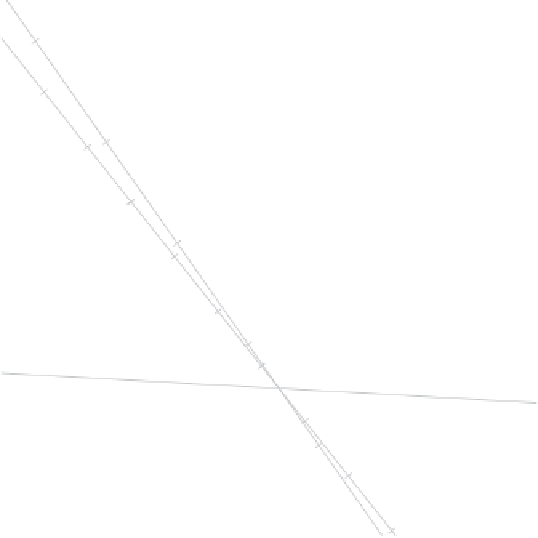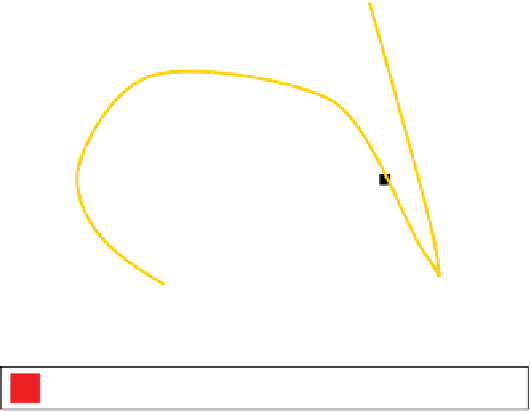Information Technology Reference
In-Depth Information
A4 (0.45)
C6 (0.62)
C8 (0.85)
C7 (0.82)
D4 (0.48)
66
32.5
1.8
A3 (0.8)
18
5.6
32
Jul00
1.2
64
1.7
5.4
2.5
1.15
31.5
16
Mar01
62
1.1
3
20
14.2
1.6
5.2
31
1.05
60
3.5
14
1
14.3
30.5
5
20.5
Target
1.5
Apr00
Aug00
49
79
Jun00
B5 (0.89)
D7 (0.72)
22
45
0.95
A5 (0.89)
21.5
28
29
Feb01
30
D6 (0.74)
26
27
58
44
21
30
50
20.5
79.2
43
0.9
4.8
14.4
A2 (0.03)
Dec00
21
1.4
Jan01
Feb00
12
A1 (0.2)
May00
Sep00
0.85
4.5
J
an00
29.5
Mar00
56
Nov00
Oct00
4.6
14.5
0.8
C5 (0.47)
C4 (0.53)
E5 (0.49)
Poor quality
Satisfactory quality
Good quality
Figure 3.34
PCA biplot of process quality data with a target, smooth trend line and
quality regions added. Axis predictivities are added in brackets after the axis labels.
quality, adequacies, axis predictivities, sample predictivities as well as the predictivity
for the target are given in Tables 3.20 - 3.24. These values are returned by the following
call to function
PCA.predictivities
:
PCA.predictivities(ProcessQuality.data[-1,],
X.new.samples = matrix(ProcessQuality.data[1,],nrow = 1),
scaled.mat = TRUE)
We see that
A2
has a particularly low axis predictivity value. When interpreting the
trend line, we mentioned that
A2
starts at a low level and reaches a high level at the
end of 2000. Comparing the observed data in Table 3.19 with this statement shows that
this is not the case. Axis predictivity is therefore an important measure of the weight
that should be given to the interpretation of each variable. Similarly,
A3
,
A5
,
B5
and
C8
have axis predictivities above 0.8. These variables clearly closely follow the pattern
suggested by the biplot and trend line.
We also see that the predictivities for
Mar00
and
Apr00
are the highest, 0.85, and
that for
Aug00
the lowest, 0.14. Comparing the predictive values for these three samples
to the observed values, we notice that
Aug00
has quite large differences especially on
A1
,
A2
,
A4
,
C7
and
D4
(see Table 3.25).





























